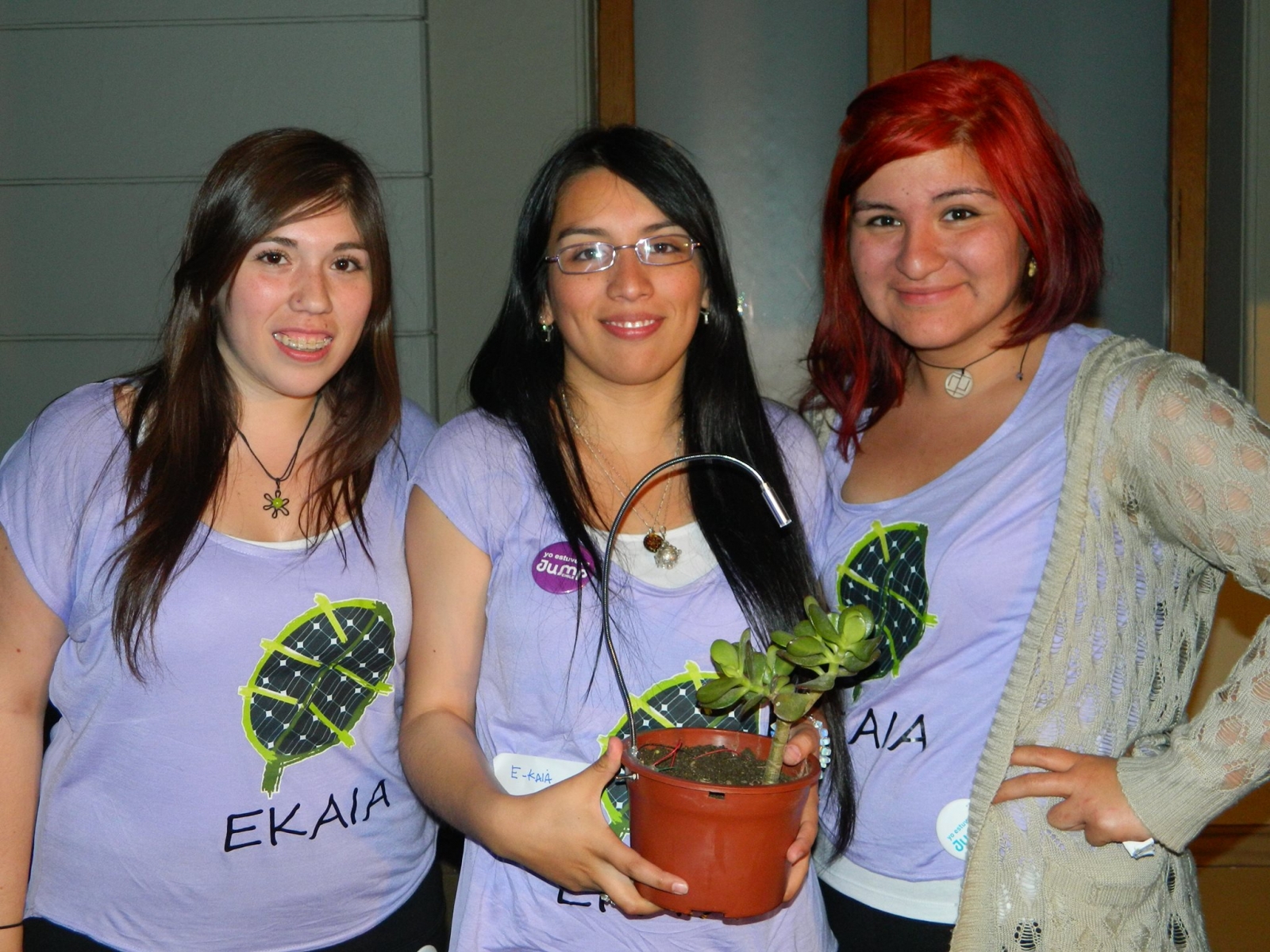Three engineers in Chile have invented a smartphone charger that is able to harness energy from plants in order to charge a phone, removing the need for an electrical power supply.
E-Kaia is the brainchild of Evelyn Aravena, Camila Rupcich and Carolina Guerrero, three engineering students who came up with the idea for an electricity-free smartphone charger when they were in university at the Duoc UC in Valparaíso and the Andrés Bello National University.

Similarly, Dutch company take advantage of electricity obtained from living plants to charge mobile phones, to power points or Wi-Fi to power over 300 LED street lights, in two places in the Netherlands. The project is called Plant-e and debuted in November of last year, in an area near Amsterdam. Now, the plant’s energy is being used and around the company’s headquarters in Wageningen.
Many researchers seeking solutions to generate electricity in the air, and the idea of using plants is close. photosynthesis plant in
Photosynthesis plant in bioprodusul State allows systems to obtain energy from plants. It could be the beginning of the new revolution in clean energy, write Inhabitat. Developed by the Dutch method does not affect the plants used for their energy. At The Same Time, the amount of energy produced is quite substantial.
Used to collect energy plants are grown in plastic containers; their process of photosynthesis transforms solar energy in sucrose. As you grow, the plants produce more sucrose than they need; This excess reaches, through the roots, in the soil around them and divides into protons and electrons. Plant-e system uses electrodes in the ground to avoid the breakdown of sucrose and, Thus, conducts electricity. The Dutch company’s founders hope that their technology to be used, one fine day, to generate power in poor areas of the world, where there is abundant vegetation. There remains only to find sufficiently cheap method to deploy the system created by them in such regions.
Biocircuit is buried in a plant pot with a plant, with outputs leading out of the soil, and 5 volts and 600 milliamps can be harvested and converted into electrical energy without causing any damage to the plant. This amount of power can charge a smartphone in one and a half hours, according to the creators.
The portable ergonomic charging device prototype is still patent-pending, and the creators say that it is not just limited to charging phones– the technology can harvest enough electricity to charge LED lamps, fans, speakers and any type of low-power product that recharges its batteries using a USB port.
